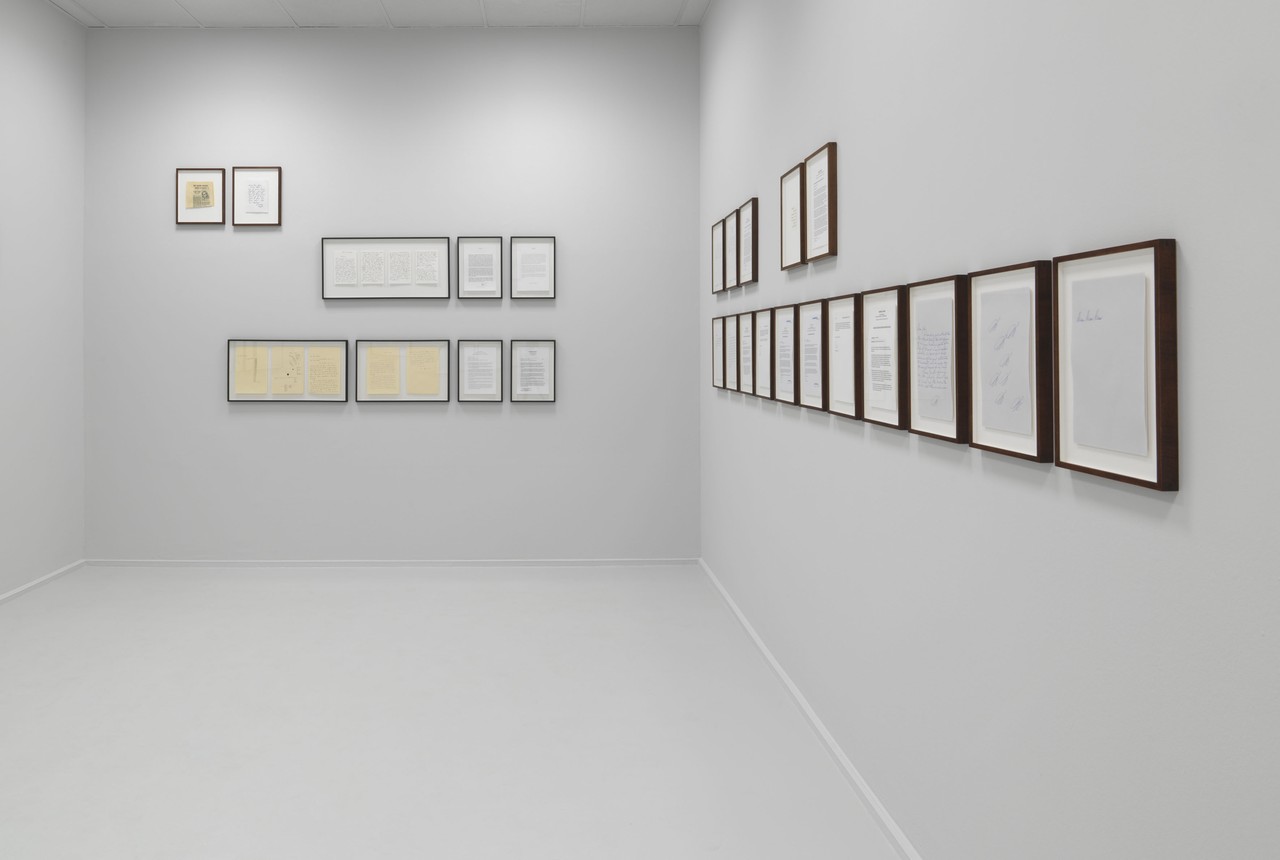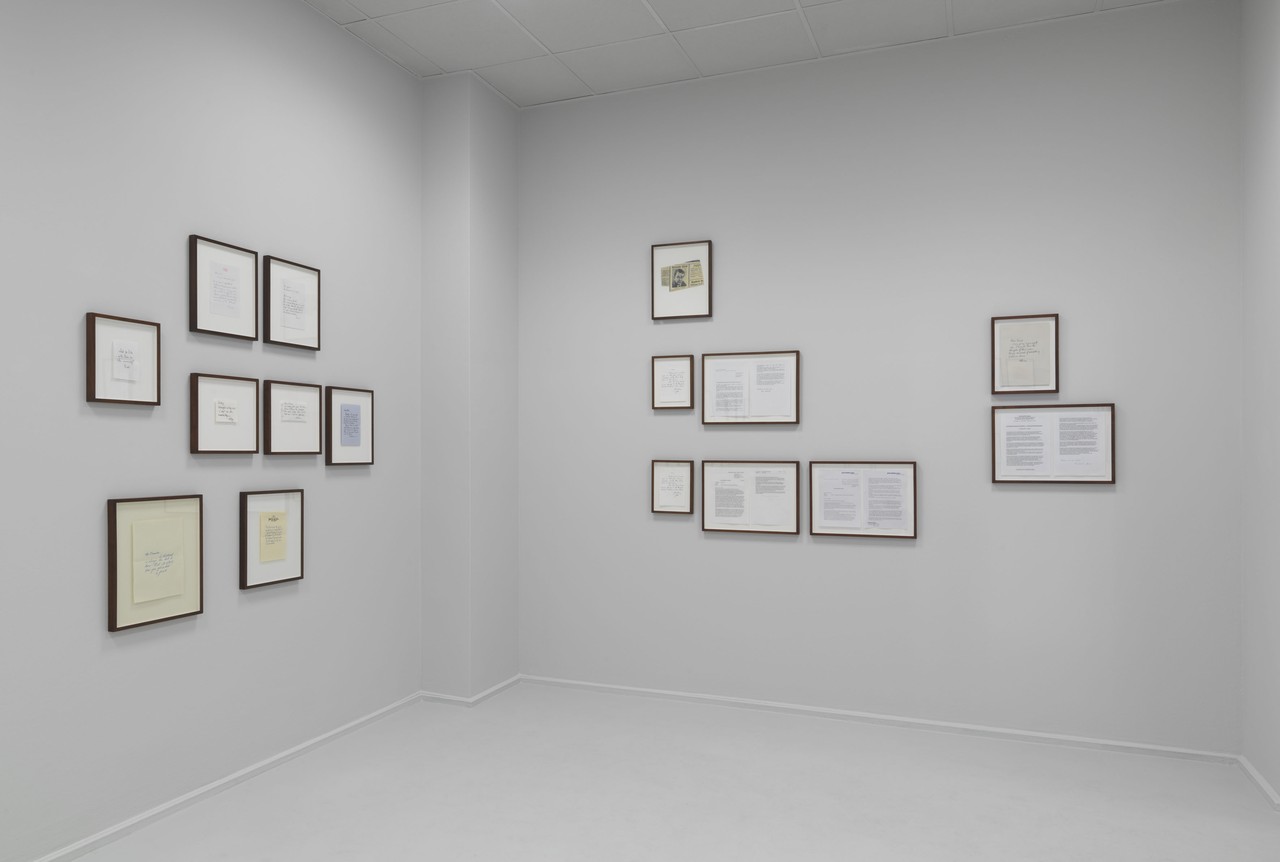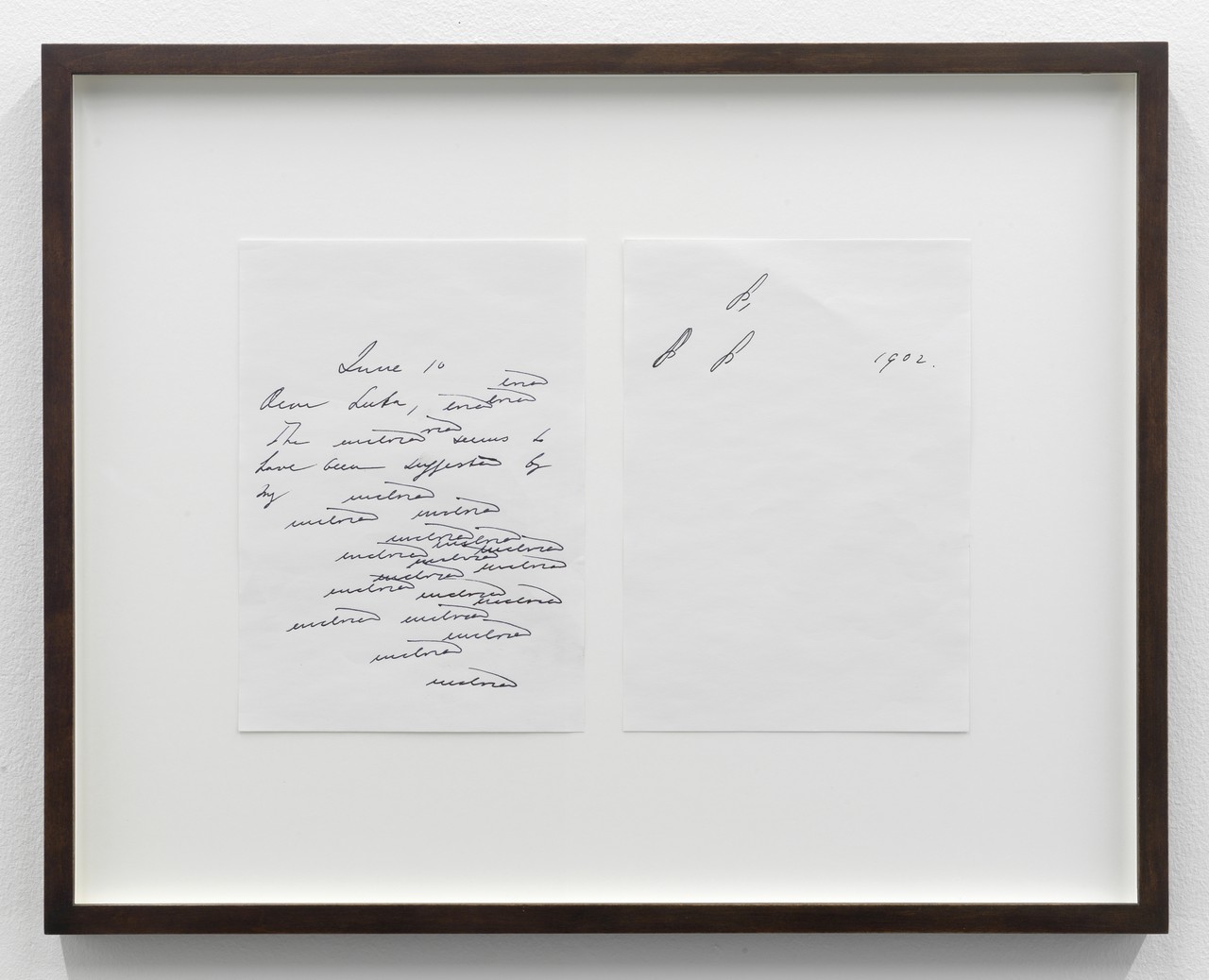Alicja Kwade
Being ...
12 Jun - 10 Aug 2018

Alicja Kwade. „Being ...“, exhibition view Neuer Berliner Kunstverein, 2018 © Neuer Berliner Kunstverein / Jens Ziehe

Alicja Kwade. „Being ...“, exhibition view Neuer Berliner Kunstverein, 2018 © Neuer Berliner Kunstverein / Jens Ziehe

Alicja Kwade. „Being ...“, exhibition view Neuer Berliner Kunstverein, 2018 © Neuer Berliner Kunstverein / Jens Ziehe

Alicja Kwade, Being Nicola Tesla (Alicja Kwade), 2011, part 1 of 4, ink on paper, framed © Alicja Kwade
In her sculptures, installations, and video works, Alicja Kwade repeatedly deals with the relationship between fiction and reality. Her works are formal attempts to explain scientific or philosophical phenomena and shed light on our perception of reality as well as on social conventions. Kwade works with traits of material, modes of representation and expectations associated with them as well as on notions of time and space.
For her series of works “Being...”, presented at Neuer Berliner Kunstverein (n.b.k.), Kwade has intensively explored letters from both real and fictional persons. Since 2006, she has been meticulously copying selected documents by hand, over and over again, thus adopting new handwritings. The copies she made in this way were finally given to certified graphologists. The experts carried out a character analysis based on the handwriting and made statements on the personality of the alleged authors, which are recorded in various reports and presented by Kwade together with the copies of the letters. The question arises as to who or what is described here: the characteristics of a film character, of an actress or a props employee, of a depicted real person or a screenplay character, or the artist herself? Kwade’s experiment equally puts the psychodiagnostic procedure and its source material to the test and refers to a play with identities as it is common in a world shaped by the media: different personalities overlap, original and construct can no longer be distinguished.
Alicja Kwade’s work is characterized by dealing with different levels of reality and the attempt to make patterns of interpretation, quasi rules and social agreements tangible in the form of sculptural hypotheses. She succeeds in translating philosophical and socio-political questions into formally strong images and in opening up new perspectives through confusion and shifts of perception. The artist repeatedly uses copying processes to question notions of reality, authorship, and identity. Since the beginning of her artistic practice, she has also integrated technological developments in the development of her oeuvre. For almost 10 years, she has been using 3D scanning processes as the basis for various works. In her spatial installation Gegebenenfalls die Wirklichkeit (Possibly Reality, 2017), natural and technological forms and processes meet: at the center is a massive granite sculpture that is a detailed reproduction of a found boulder. Using 3D point scanning, the original was captured and the data transferred to a milling machine, which makes an exact copy. During the production, however, the artist stopped the manufacturing process, so that the sculpture remains between its raw and final form. The granite sculpture was presented in a comprehensive spatial installation, supplemented by a total of 30,000 A4 pages: the mathematical coordinates of the original boulder created in the technological scanning process – the exact mathematical description of the original form, the information about the original object, which is now reproduced using digital technology. Based on the production process described above, Alicja Kwade also created the work WeltenLinie, which was presented at the Venice Biennale in 2017. Here a boulder and a petrified tree stump were measured and different versions and conditions of the originals were produced in varying materials. Their arrangement in a setting of steel frames and mirrors created a confusing variety of parallel worlds that challenged the perception of the viewers. At the same time, they themselves became part of the artwork, which aimed at a different perception of the environment, the subjectivity of seeing and thus of reality.
Alicja Kwade (b. 1979 in Katowice, living in Berlin) studied at the Berlin University of the Arts (1999–2005) and, for her artistic work, was awarded the Hector Prize of the Kunsthalle Mannheim (2015), the Karl Schmidt-Rottluff Grant (2011) and the Piepenbrock Prize for Sculpture (2008). Recent solo exhibitions (selection): Kunsthalle Kiel (2018); Haus Konstruktiv, Zurich (2018); Yuz Museum, Shanghai (2017); Whitechapel Gallery, London (2016); Haus am Waldsee, Berlin (2015); Kunsthalle Nürnberg (2015); Schirn Kunsthalle Frankfurt (2015). Group exhibitions (selection): Venice Biennale (2017); Aarhus Triennial (2017); Frankfurter Kunstverein (2017); Kochi-Muziris Biennale (2016); Museum Frieder Burda, Baden-Baden (2016).
For her series of works “Being...”, presented at Neuer Berliner Kunstverein (n.b.k.), Kwade has intensively explored letters from both real and fictional persons. Since 2006, she has been meticulously copying selected documents by hand, over and over again, thus adopting new handwritings. The copies she made in this way were finally given to certified graphologists. The experts carried out a character analysis based on the handwriting and made statements on the personality of the alleged authors, which are recorded in various reports and presented by Kwade together with the copies of the letters. The question arises as to who or what is described here: the characteristics of a film character, of an actress or a props employee, of a depicted real person or a screenplay character, or the artist herself? Kwade’s experiment equally puts the psychodiagnostic procedure and its source material to the test and refers to a play with identities as it is common in a world shaped by the media: different personalities overlap, original and construct can no longer be distinguished.
Alicja Kwade’s work is characterized by dealing with different levels of reality and the attempt to make patterns of interpretation, quasi rules and social agreements tangible in the form of sculptural hypotheses. She succeeds in translating philosophical and socio-political questions into formally strong images and in opening up new perspectives through confusion and shifts of perception. The artist repeatedly uses copying processes to question notions of reality, authorship, and identity. Since the beginning of her artistic practice, she has also integrated technological developments in the development of her oeuvre. For almost 10 years, she has been using 3D scanning processes as the basis for various works. In her spatial installation Gegebenenfalls die Wirklichkeit (Possibly Reality, 2017), natural and technological forms and processes meet: at the center is a massive granite sculpture that is a detailed reproduction of a found boulder. Using 3D point scanning, the original was captured and the data transferred to a milling machine, which makes an exact copy. During the production, however, the artist stopped the manufacturing process, so that the sculpture remains between its raw and final form. The granite sculpture was presented in a comprehensive spatial installation, supplemented by a total of 30,000 A4 pages: the mathematical coordinates of the original boulder created in the technological scanning process – the exact mathematical description of the original form, the information about the original object, which is now reproduced using digital technology. Based on the production process described above, Alicja Kwade also created the work WeltenLinie, which was presented at the Venice Biennale in 2017. Here a boulder and a petrified tree stump were measured and different versions and conditions of the originals were produced in varying materials. Their arrangement in a setting of steel frames and mirrors created a confusing variety of parallel worlds that challenged the perception of the viewers. At the same time, they themselves became part of the artwork, which aimed at a different perception of the environment, the subjectivity of seeing and thus of reality.
Alicja Kwade (b. 1979 in Katowice, living in Berlin) studied at the Berlin University of the Arts (1999–2005) and, for her artistic work, was awarded the Hector Prize of the Kunsthalle Mannheim (2015), the Karl Schmidt-Rottluff Grant (2011) and the Piepenbrock Prize for Sculpture (2008). Recent solo exhibitions (selection): Kunsthalle Kiel (2018); Haus Konstruktiv, Zurich (2018); Yuz Museum, Shanghai (2017); Whitechapel Gallery, London (2016); Haus am Waldsee, Berlin (2015); Kunsthalle Nürnberg (2015); Schirn Kunsthalle Frankfurt (2015). Group exhibitions (selection): Venice Biennale (2017); Aarhus Triennial (2017); Frankfurter Kunstverein (2017); Kochi-Muziris Biennale (2016); Museum Frieder Burda, Baden-Baden (2016).
